Organizing Great Math Problems with Google Keep
This blog post contains Amazon affiliate links. As an Amazon Associate, I earn a small commission from qualifying purchases.
For my entire teaching career, I have been looking for a way to organize the great math problems and tasks I come across. I have tried so many different methods of organizing them, but I have never stuck with one method for any extended period of time.
I’ve tried Google Docs with links to activities and screenshots pasted in the document. This method worked fine at first, but it quickly became unwieldy.
Next, I tried screenshotting activities and adding them to my folders for each topic on my computer. This worked, but it was too hard to record the source of the activities/problems.
I tried printing everything out and putting it in an “Idea Binder.” I soon found out that I had way too many ideas I wanted to save. I felt guilty about all of the trees I was killing. And, my binders filled up way too fast.
I tried Shelli’s idea of printing problems on index cards. Well, I kinda tried it. I bought a bunch of index cards at a garage sale for super cheap. I made a Publisher template that was the exact size of a 3 x 5 index card. Then, I went through several textbooks and screenshotted the problems I wanted to save so I could put them on the template to print. But, then I never got around to printing any of them.
Many people have recommended Evernote for this sort of organization. I have tried to set it up multiple times and failed each time. The add to Evernote extension took to long to load, and I would often save things without categorizing them. I would tell myself I would go back and sort everything later. Later never came.
Years ago, I tried Google Keep to organize activities I had “like” on twitter. This did not last long. Sending things to Google Keep was too finicky, so I didn’t keep up with it.
Recently, I decided to try Google Keep again. I wasn’t 100% sold on it, but I recently discovered a very cool feature that has me fully committed to using it as my go-to organization method for organizing the great activities and problems I find online and in textbooks. Hopefully this helps someone else, too!
Here’s what my Google Keep looks like. This is my Exponentials section.
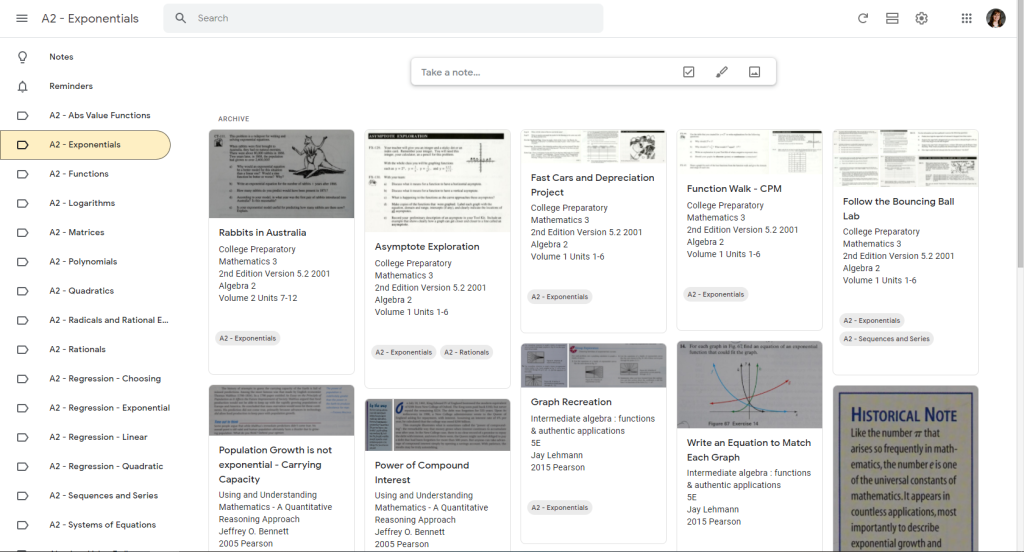
For example, here’s a task about the population of rabbits in Australia that I found in an old copy of CPM (College Preparatory Mathematics.) I took a screenshot of the problem using the Snipping Tool on my laptop.
The good thing about this method is that the Snipping Tool automatically copies whatever you snip to your computer’s clipboard. Then, you can simply paste the image into Google Keep (Control-V makes this super easy.) This means there is no need to save the screenshot or give it a file name.
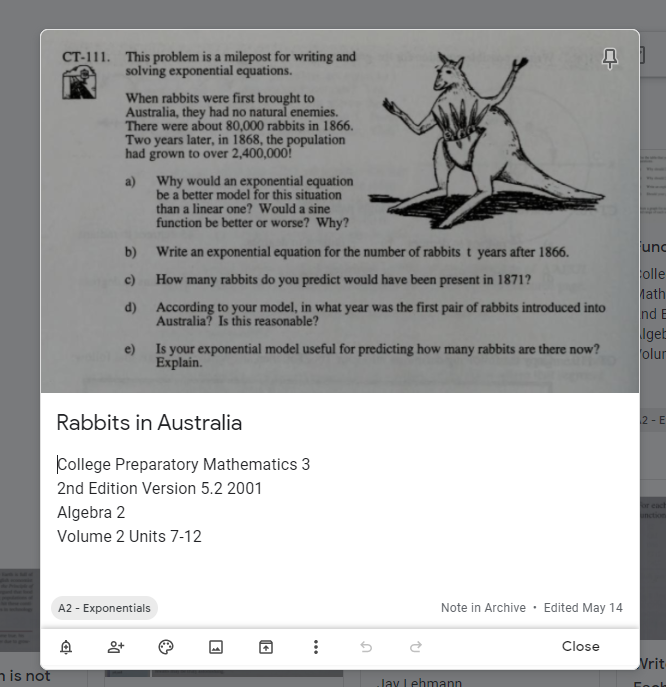
I copy and paste the source of the problem in the note inside Google Keep. I maintain a list of the textbooks I have harvested problems from in Google Docs. I keep this tab open so all I have to do is copy and paste it into Google Keep. This google doc helps me keep track of what textbooks I have looked through. Eventually, I would like to work through all of the textbooks that I have digital copies of.
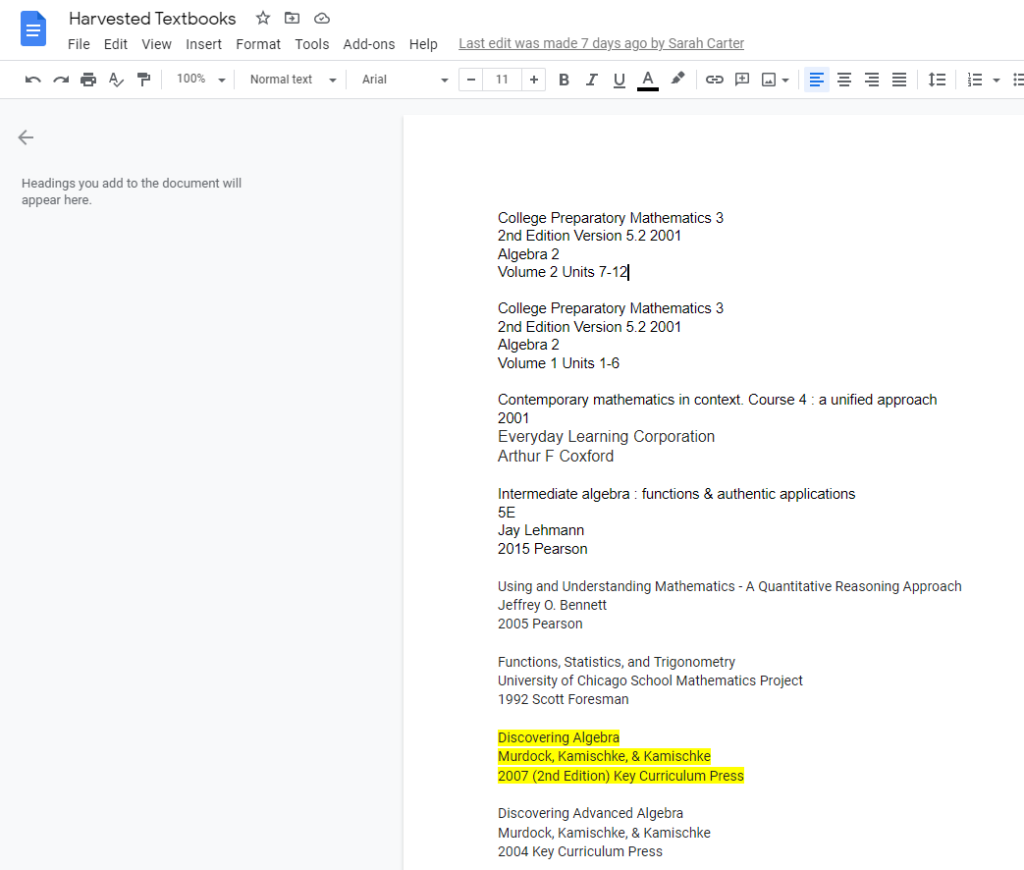
A few weeks ago, I made my exciting discovery. I was looking for a problem that I had remembered adding to my Google Keep. I did a search on Google Keep and I found exactly what I was looking for. Then, I noticed that the search results didn’t make exact sense. Some of the search results didn’t include the word I had been searching for.
When I opened one of these search results, I realized that word I had searched for was IN THE IMAGE – not in any of the words I had typed or the category I had put the image in. Google Keep was SEARCHING THE TEXT OF MY IMAGES. This is a game changer.
For example, when I search “exponential” in Google Keep, I get everything that I have placed in my exponentials folder plus any images that have the word “exponential” in the text of the image. WHAT?!?
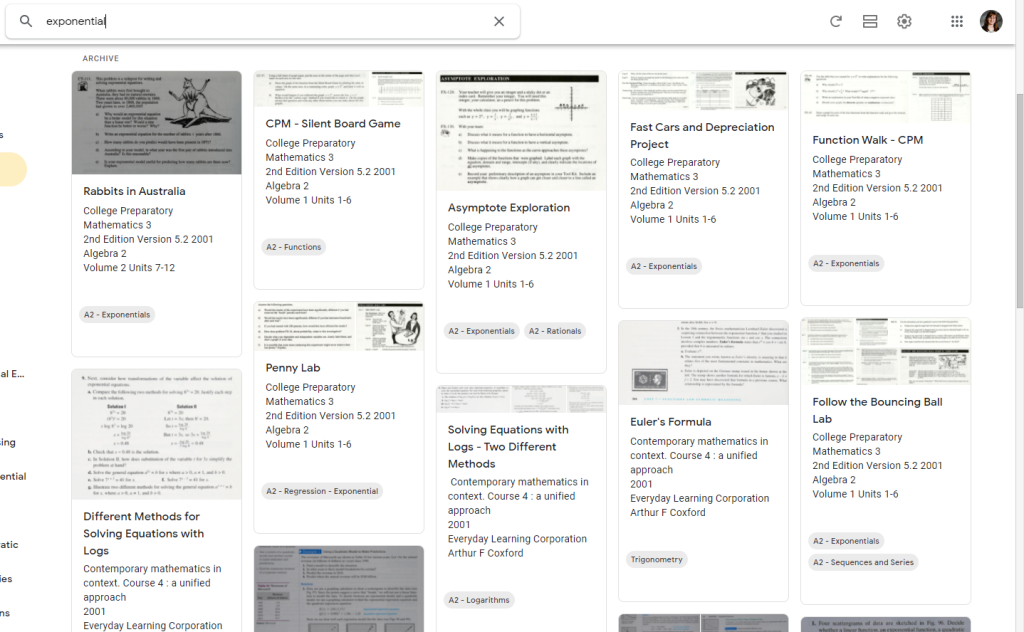
To test it out again, I did a search for “Euler.” You’ll see that only one of my search results had the word “Euler” typed out. This means I don’t even have to type titles for the images if I don’t want to. I still am typing titles for the most part just to make it easier for myself to find things.
I’ve been trying to save all the little historical tidbits about mathematicians that I find in the textbooks I have been looking through. This is an area of my teaching that I want to improve in. I want to learn more about the history of mathematics so I can share more of this history with my students.
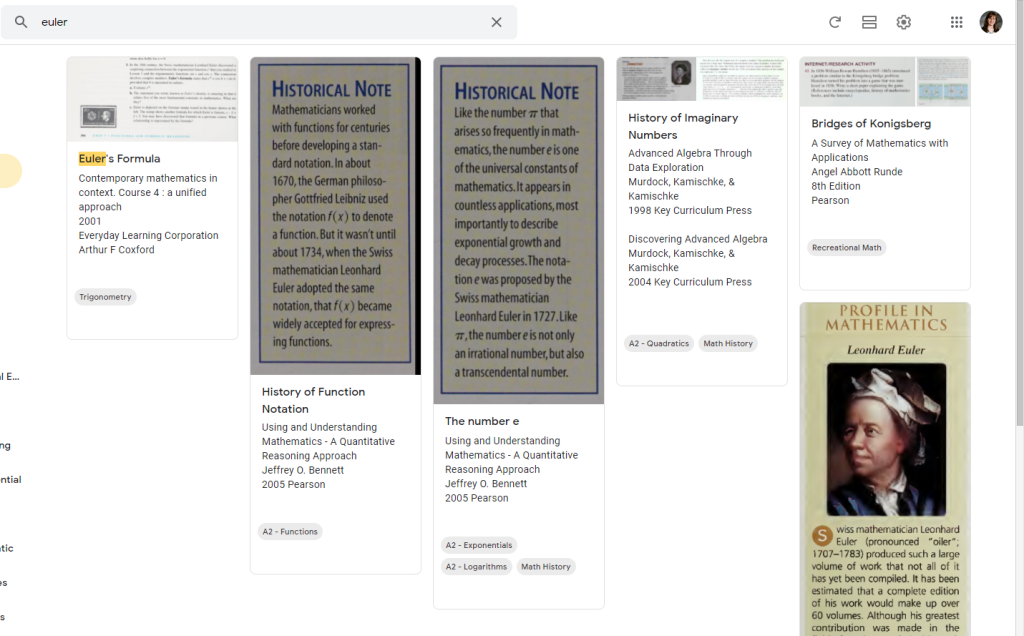
I look forward to growing my collection of great math problems over the summer months.

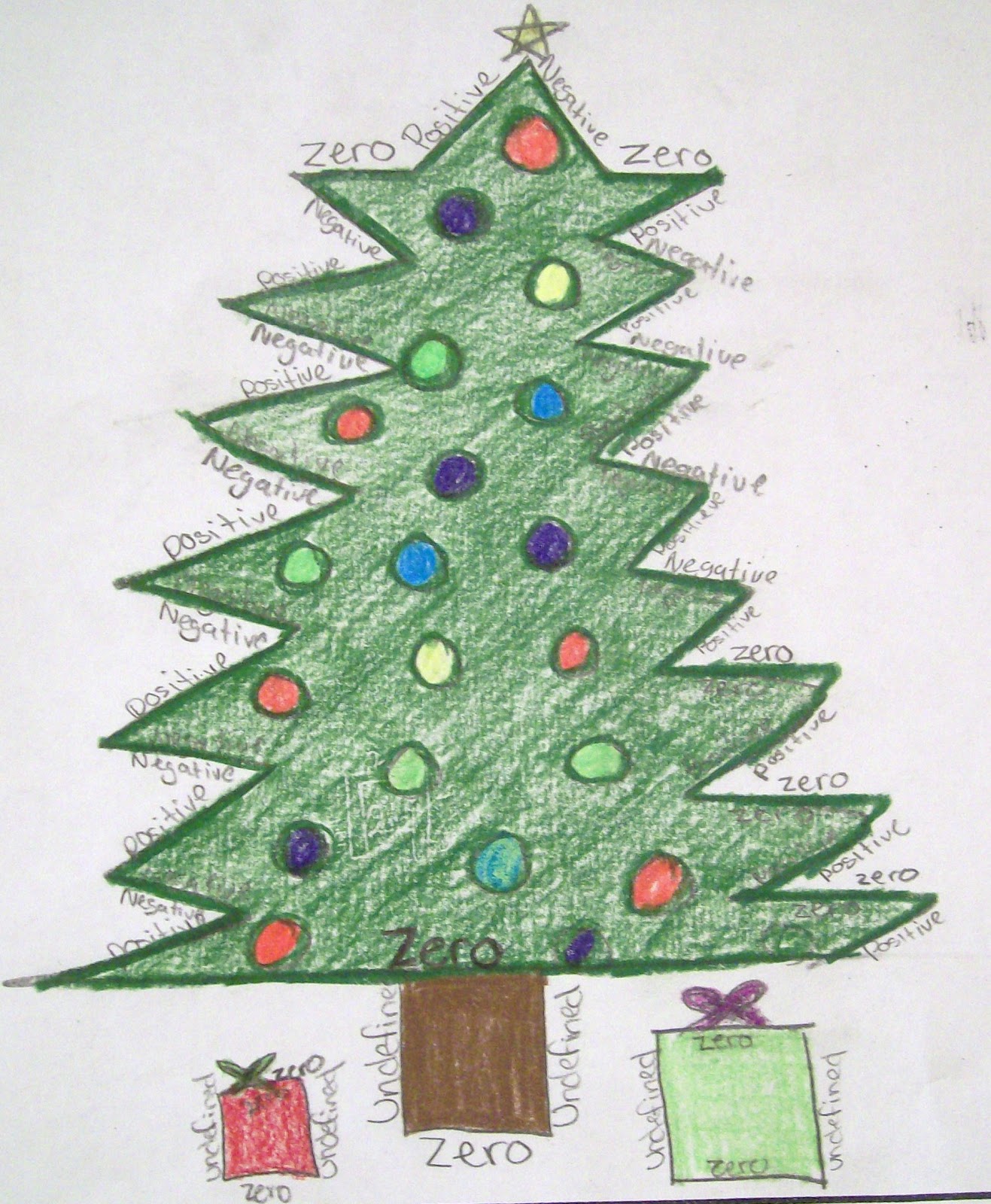
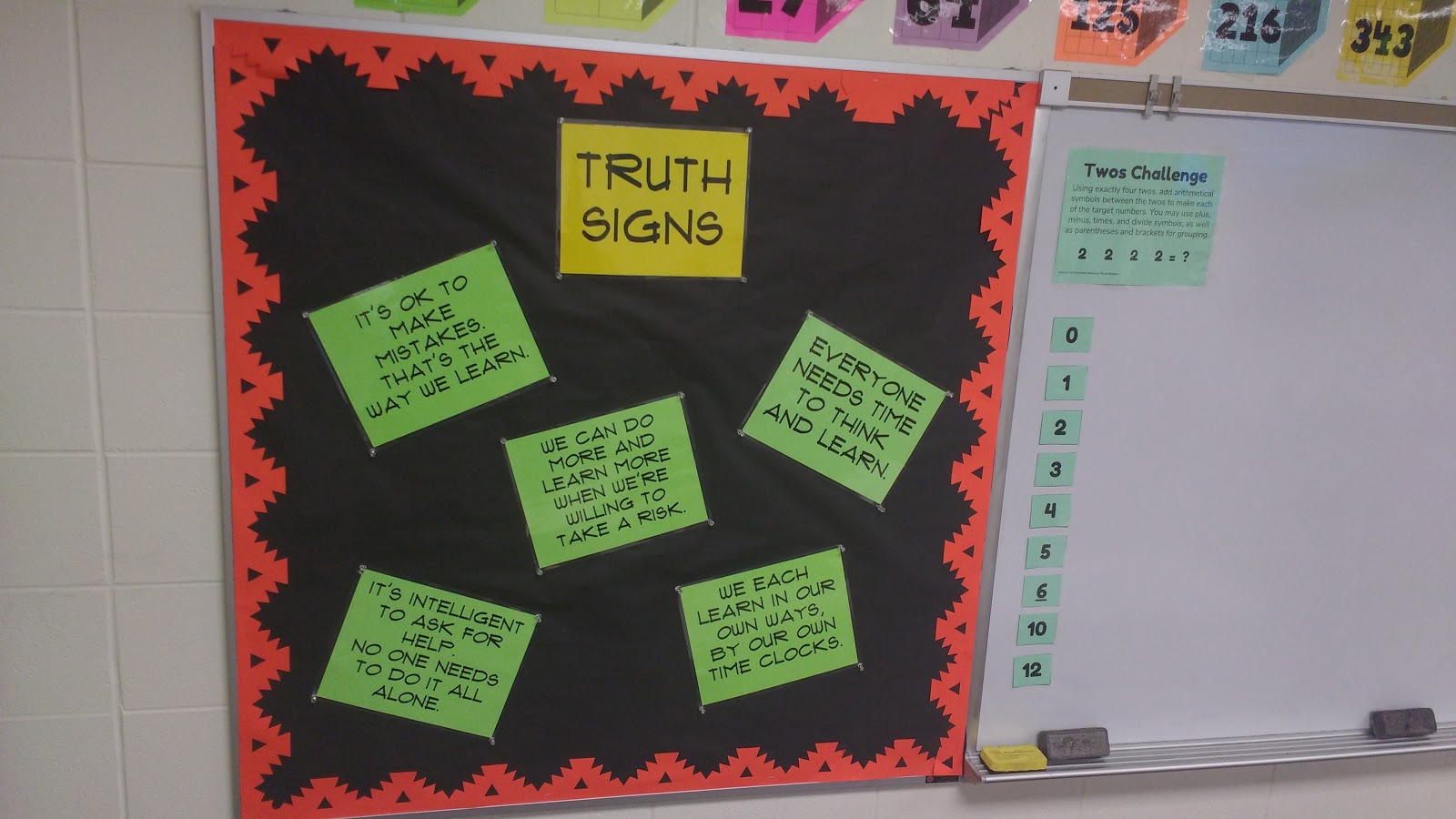
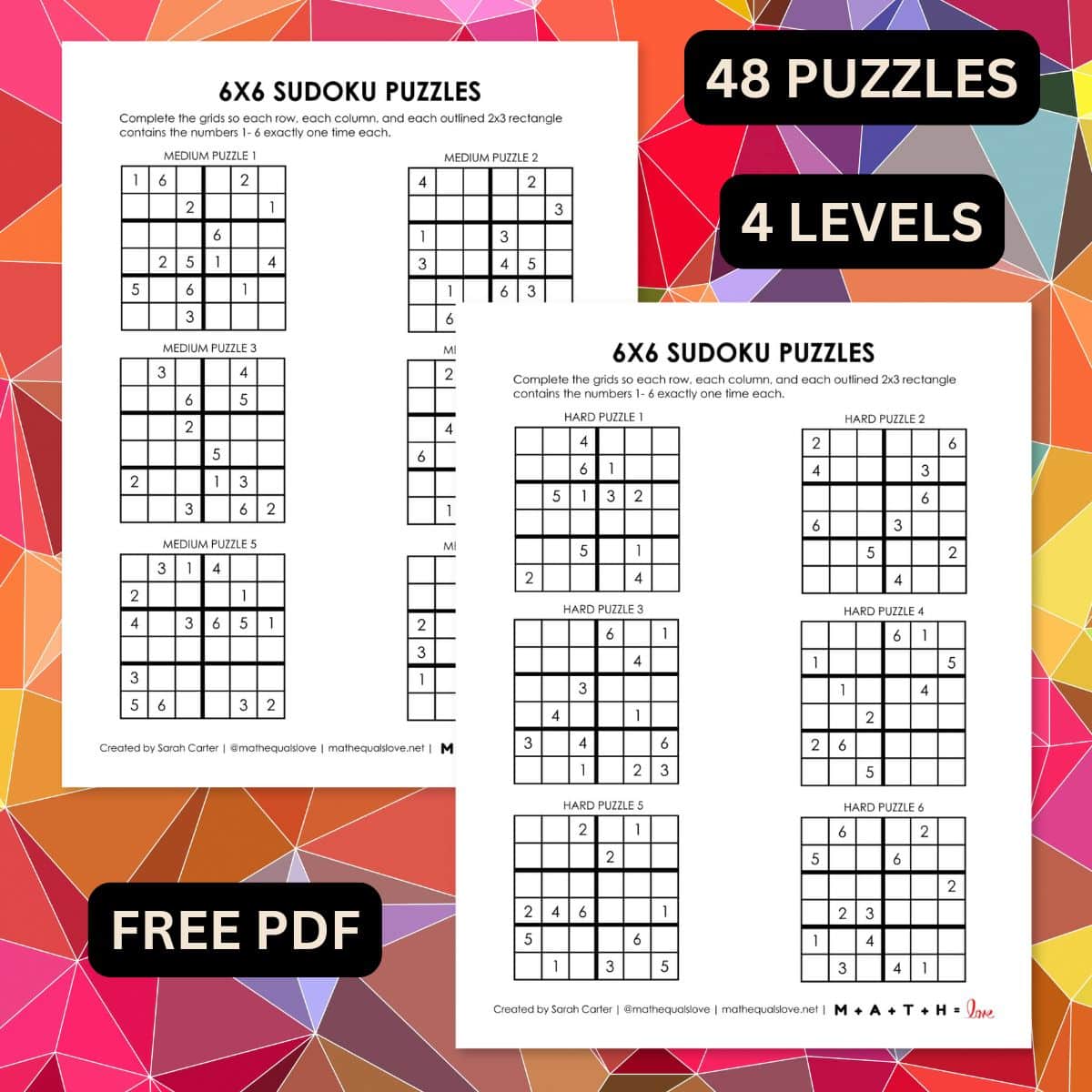



Sarah thank you for all. I was looking for the 5 piece non equal parts for making an equalateral triangle. I am sure that I saw it on your site but cannot find it. Can you help? Thanks Johnny
It’s Called “Parts of a Whole” if you want to search for it.
Thank you for this post. I have been wondering how to organize my out-of-control ideas. Once again, you have pointed me in the right direction. :0)